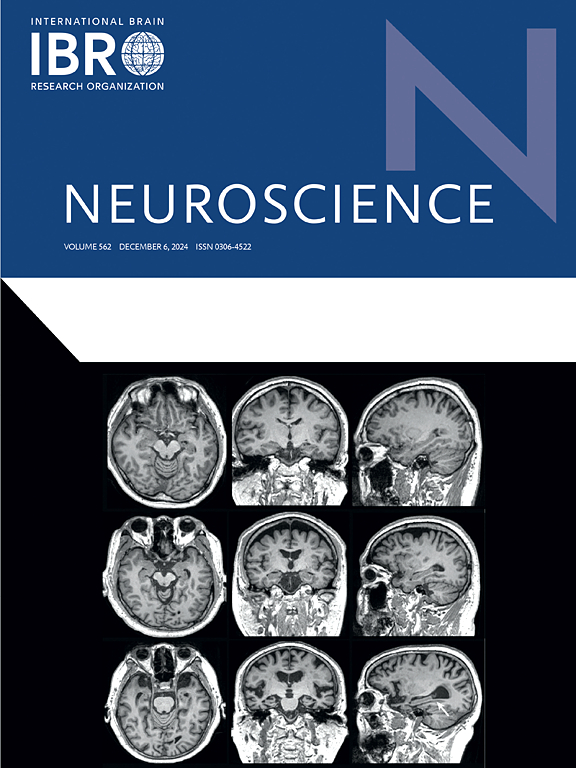Increased Risk of Dementia and its Subtypes following Various Forms of Acquired Brain Injury: a Meta-analysis and Systematic Review
IF 2.9
3区 医学
Q2 NEUROSCIENCES
引用次数: 0
Abstract
In recent years, acquired brain injuries (ABIs) have been implicated in the development and pathogenesis of dementia; however, existing data is conflicting and often lacks precise classifications or comprehensive analyses. This review sought to synthesize available evidence to assess the association between four major ABI types—traumatic brain injury (TBI), cerebral atherosclerosis (AS), intracranial hemorrhage, and ischemic stroke—and risk of subsequent all-cause dementia (ACD) and dementia subtypes, including Alzheimer’s disease (AD), vascular dementia (VaD), frontotemporal lobar degeneration (FTLD), and dementia with Lewy bodies (DLB). A comprehensive literature review was conducted across public databases, assessing studies published until February 2025, and garnering 107 studies that met inclusion criteria. Meta-analysis of pooled odds ratios (ORs) and 95% confidence intervals (CIs) indicated that TBI was associated with increased ACD, AD, VaD, and FTLD (OR: 1.79, CI: 1.66–1.92, OR: 1.60, CI: 1.44–1.77, OR: 2.03, CI: 1.79–2.30, and OR: 3.99, CI: 2.20–7.20, respectively); cerebral AS was linked to increased odds of ACD, VaD, and FTLD (OR: 1.29, CI: 1.14–1.45, OR: 2.77, CI: 1.72–4.44, and OR: 1.16, CI: 1.07–1.26, respectively); and both intracranial hemorrhage and ischemic stroke conferred increased risks for ACD, AD, and VaD (OR: 2.40, CI: 2.27–2.55, OR: 1.28, CI: 1.03–1.59, and OR: 5.75, CI: 4.73–6.99, as well as OR: 1.24, CI: 1.18–1.31, OR: 1.89, CI: 1.79–2.00, and OR: 2.01, CI: 1.80–2.25, respectively). This meta-analysis indicates a significant relationship between various ABIs and subsequent dementia with variation in subtype-specific associations, underscoring the importance of ABI prevention and post-injury monitoring to mitigate dementia risk.
不同形式获得性脑损伤后痴呆及其亚型风险增加:荟萃分析和系统回顾
近年来,获得性脑损伤(ABIs)与痴呆的发展和发病机制有关;然而,现有的数据相互矛盾,往往缺乏精确的分类或全面的分析。本综述旨在综合现有证据,评估四种主要ABI类型(创伤性脑损伤(TBI)、脑动脉粥样硬化(AS)、颅内出血和缺血性卒中)与随后的全因痴呆(ACD)和痴呆亚型(包括阿尔茨海默病(AD)、血管性痴呆(VaD)、额颞叶变性(FTLD)和路易体痴呆(DLB))的风险之间的相关性。在公共数据库中进行了全面的文献综述,评估了截至2025年2月发表的研究,并获得了107项符合纳入标准的研究。综合优势比(OR)和95%置信区间(CI)的荟萃分析显示,TBI与ACD、AD、VaD和FTLD增加相关(OR: 1.79, CI: 1.66-1.92, OR: 1.60, CI: 1.44-1.77, OR: 2.03, CI: 1.79 - 2.30, OR: 3.99, CI: 2.20-7.20);脑AS与ACD、VaD和FTLD的发生率增加有关(OR: 1.29, CI: 1.14-1.45, OR: 2.77, CI: 1.72-4.44, OR: 1.16, CI: 1.07-1.26);颅内出血和缺血性中风都增加了ACD、AD和VaD的风险(OR: 2.40, CI: 2.27-2.55, OR: 1.28, CI: 1.03-1.59, OR: 5.75, CI: 4.73-6.99, OR: 1.24, CI: 1.18-1.31, OR: 1.89, CI: 1.79-2.00, OR: 2.01, CI: 1.80-2.25)。该荟萃分析表明,各种ABI与随后的痴呆之间存在显著关系,但亚型特异性关联存在差异,强调了ABI预防和损伤后监测对减轻痴呆风险的重要性。
本文章由计算机程序翻译,如有差异,请以英文原文为准。
求助全文
约1分钟内获得全文
求助全文
来源期刊

Neuroscience
医学-神经科学
CiteScore
6.20
自引率
0.00%
发文量
394
审稿时长
52 days
期刊介绍:
Neuroscience publishes papers describing the results of original research on any aspect of the scientific study of the nervous system. Any paper, however short, will be considered for publication provided that it reports significant, new and carefully confirmed findings with full experimental details.
 求助内容:
求助内容: 应助结果提醒方式:
应助结果提醒方式:


